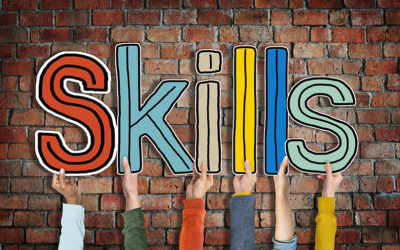Workforce Brief
The Community Colleges’ Basic Skills Mission
The mission of the community colleges around basic skills is to offer both for-credit “developmental education” programs that have the
goal of addressing basic skills weaknesses of students seeking to enter degree- and/or transfer applicable college courses; and non-credit basic skills courses for students with a range of goals.
Details
Report Author: The California EDGE Coalition
Date: August 2011
Website: www.californiaedgecoalition.org
This installment of the Workforce Brief Series titled “Community Colleges – Basic Skills” describes the dual roles of basic skills in community colleges, and how those roles serve targeted populations and help them achieve positive educational and economic outcomes. To learn more, download the full text of the article here.
Funding
Seventeen colleges receive federal Workforce Investment Act Title II funds from the AEP, but most of the CCC funding for basic skills is from state and local monies. Credit basic skills courses receive the highest level of funding ($4,565 for each FTES in 2009-10); three-fifths of CCC basic skills enrollment is in this category. Noncredit basic skills courses are funded at a rate of $3,232 in 2009-10.
BSI
Funding is also available through the Basic Skills Initiative (BSI), a program supported by the General Fund and designed to
strengthen basic skills education and improve student achievement. The BSI was cut by 32 percent in 2009-10 to roughly $20
million and was funded at this same level in 2010-11.
By the Numbers
For-Credit Basic Skills vs. Non-Credit Basic Skills funding for FTEs.
For-Credit Basic Skills
Non-Credit Basic Skills
33% (5 million)
California Workers Earning less than $13.63 per hour
Accountability
CCCs implemented an annual report called Accountability Reporting for the Community Colleges (ARRC) which focuses almost exclusively on credit students and provides an overview of demographics and outcomes. In 2008, the Chancellor’s office added a companion Basic Skills Accountability report that includes three kinds of metrics: student demographics; workload metrics; and student progress metric, both short- and long-term.
Population Served
The CCCs serve three types of basic skills students: Recent high school graduates who aim to earn a credential or transfer to a four-year institution but need help with specific skills, Adults who have been out of school for a few years and want to earn a vocational certificate or associate’s degree or transfer to a four-year institution but have weak basic skills, and Older adults who have significant skill deficits – often Latino English language-learners – who may not intend to earn a certificate, degree, or transfer. More than one-fifth of basic skill students are in this group.
More Reports from the California EDGE Colalition
WORKFORCE BRIEF: Providing Opportunity for California’s Low-Wage Workers
Workforce Brief Providing Opportunity for California's Low Wage Workers California’s workforce earned less than $13.63 per hour, two-thirds of the median wage of a full-time worker. Unless California’s education and training institutions address the skill needs of...
Maintaining California’s EDGE – A Policy Agenda for Shared Prosperity
California’s future is at a crossroads. Our economy is robust and we have a vibrant, multi-ethnic workforce, but growing gaps in educational attainment, income inequality, and dramatic technological change threaten to undermine the goal of shared prosperity and...
Basic Skills Education
PROVIDE ALL CALIFORNIANS ACCESS TO HIGH QUALITY POSTSECONDARY EDUCATION AND TRAINING A postsecondary degree or certificate is increasingly essential for a middle class life and recent studies suggest that unless California increases the share of residents with...
Become a Workforce Advocate
Sign up here for updates on letter writing campaings, advocacy efforts, and more.




